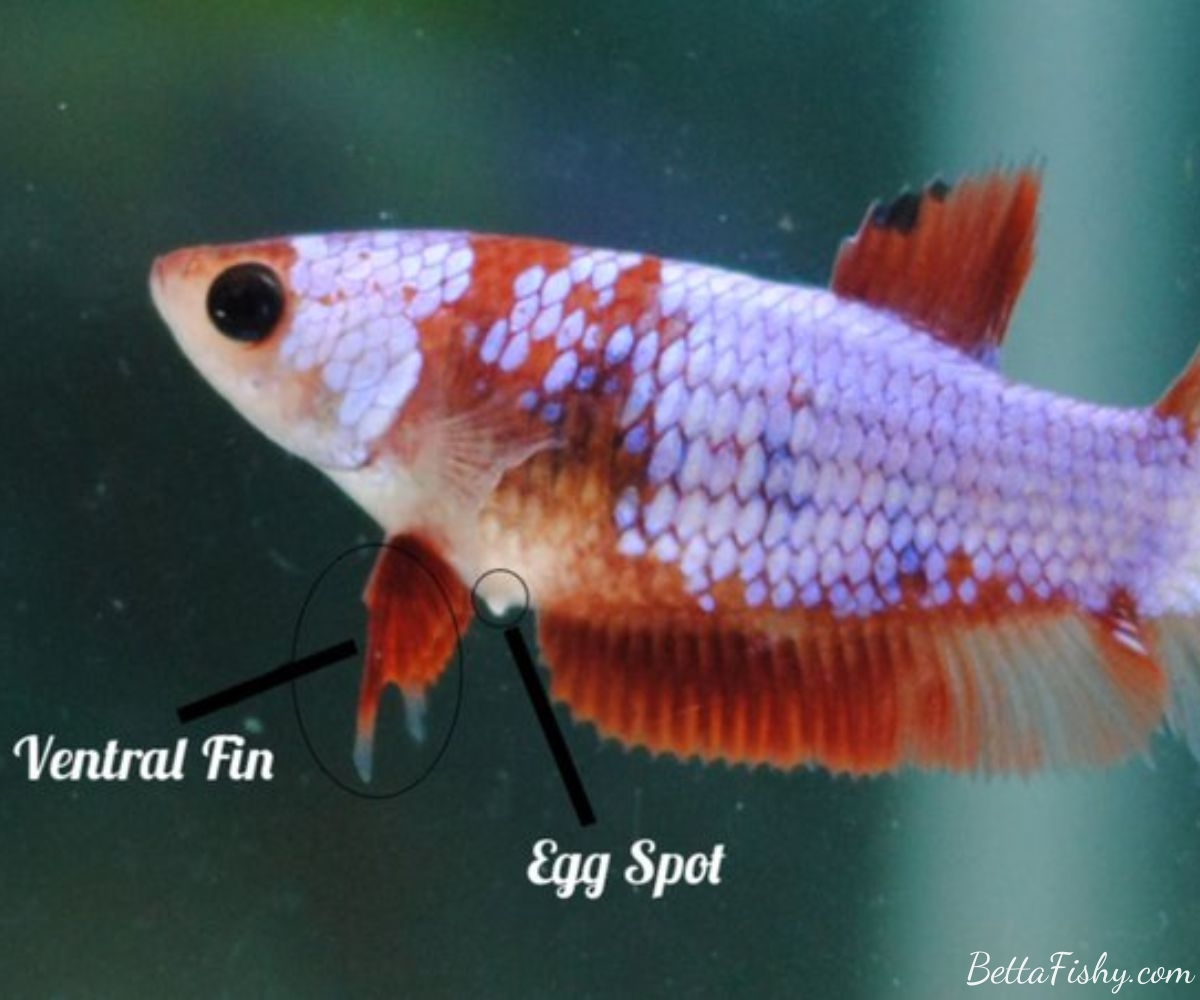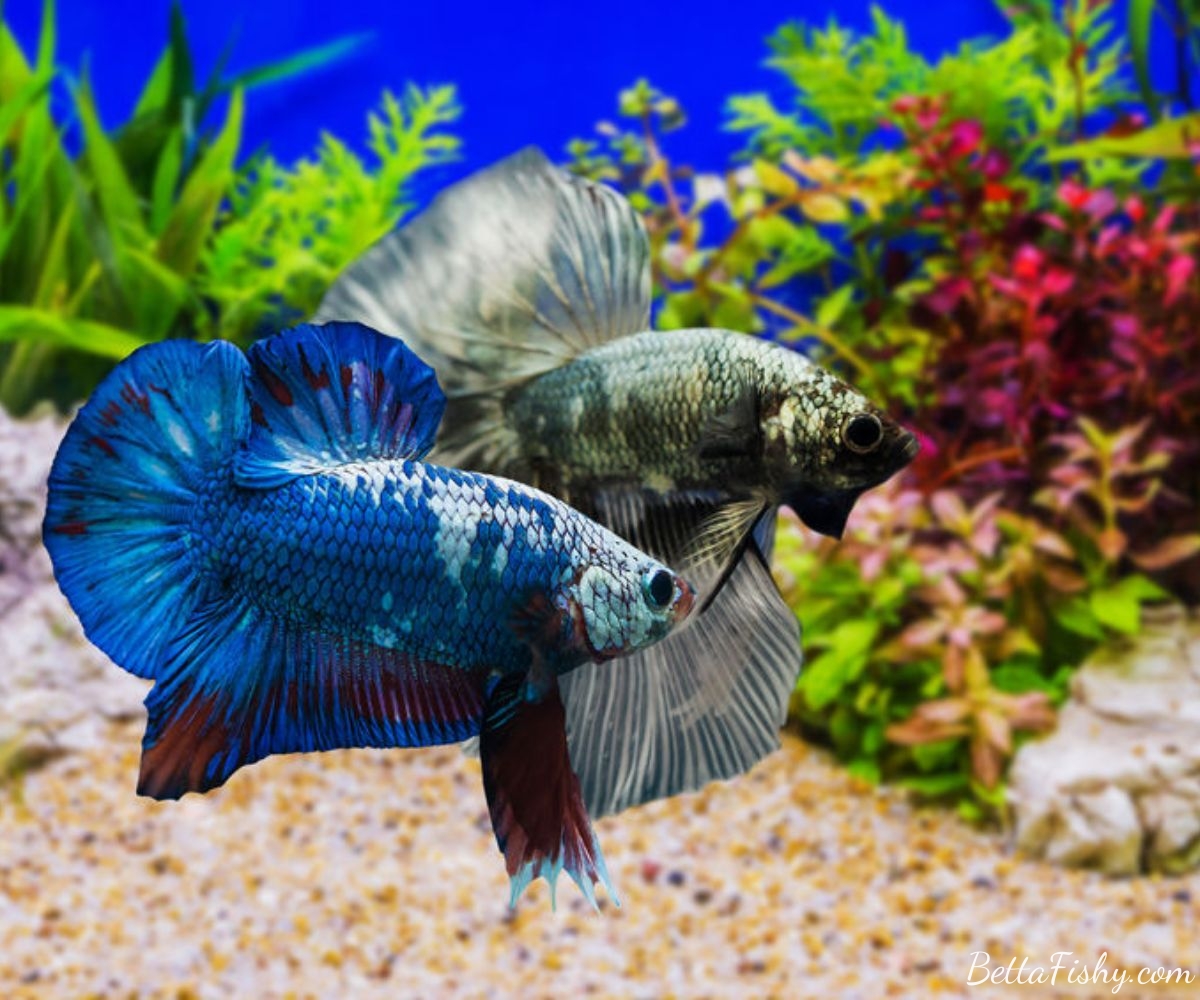Betta fish, also known as Siamese fighting fish, are a popular species in the world of aquarium enthusiasts. Their vibrant colors, flowing fins, and captivating behaviors make them stand out among other aquatic creatures. However, what sets betta fish apart even further is the distinct differences between male and female bettas. In this article, BettaFishy will delve into the anatomy of a betta fish and explore the physical characteristics, behavioral patterns, and breeding habits that make them unique.
Introduction: The Fascinating World of Betta Fish
Before we dive into the anatomy of betta fish, let’s take a moment to appreciate the beauty and diversity of these creatures. Native to Southeast Asia, betta fish have been bred for centuries for their striking appearance and aggressive nature. In the wild, they can be found in shallow ponds, rice paddies, and slow-moving streams. However, in captivity, they thrive in small tanks or bowls with proper care and maintenance.
Betta fish come in a variety of colors, including red, blue, green, purple, and even white. Their fins can also vary in shape and size, with some having long, flowing fins while others have shorter, more compact ones. These unique features make betta fish a popular choice for aquarium enthusiasts looking to add a splash of color to their tanks.
The Overall Anatomy of a Betta Fish

The body of a betta fish is made up of various parts that work together to create its distinctive appearance and behavior. Let’s take a closer look at these components and how they contribute to the overall anatomy of a betta fish.
Fins
One of the most striking features of betta fish is their elaborate fins. These fins not only add to their aesthetic appeal but also serve important functions in their daily lives. There are four main types of fins found on a betta fish:
- Dorsal Fin: Located on the back of the fish, the dorsal fin helps maintain balance and stability while swimming. It can vary in size and shape among different betta varieties. The dorsal fin is also used by male bettas during courtship displays, where they flare it out to appear larger and more intimidating to potential rivals.
- Anal Fin: Situated on the underside of the fish, the anal fin aids in stability and balance. Similar to the dorsal fin, it exhibits variations in size and shape across different betta strains. The anal fin is also used by both male and female bettas to steer and fine-tune their movements while swimming.
- Tail Fin: Commonly referred to as the caudal fin, the tail fin is the most prominent and visually striking feature of betta fish. It propels the fish through the water and contributes significantly to their elegant swimming style. The tail fin can come in various shapes and sizes, depending on the betta variety.
- Ventral Fins: Positioned near the fish’s belly, the ventral fins assist in maintaining balance, steering, and fine-tuning movements. They often play a supporting role in courtship displays, where male bettas use them to hold onto the female during the mating process.
Body Shape
The body of a betta fish is another defining characteristic that sets it apart from other fish species. Bettas have a long, slender body with a pointed head and a tapered tail. This streamlined shape allows them to move quickly and gracefully through the water. Male bettas tend to have a more elongated body compared to females, which is believed to aid in their aggressive behavior and territorial nature.
Head and Gills
The head of a betta fish is adorned with a pair of large, protruding eyes that give them excellent vision. Their eyes are also capable of moving independently, allowing them to keep an eye out for predators while focusing on potential prey. The gills of a betta fish are located on either side of its head and are responsible for extracting oxygen from the water. Unlike most fish, bettas have a specialized organ called the labyrinth organ, which allows them to breathe air from the surface. This adaptation enables them to survive in low-oxygen environments such as stagnant ponds or small fish tanks.
Decoding Sexual Distinctions
Apart from their physical differences, male and female betta fish also have distinct characteristics that help differentiate between the two.
Egg Spot: A Tell-Tale Sign of Females

One of the most significant differences between male and female betta fish is the presence of an egg spot on the female’s belly. This small white dot is a sign that the female is ready to breed. It is a remnant of the ovipositor, which is used to deposit eggs during spawning. Male betta fish do not have this egg spot.
Coloration: Males vs. Females
Male betta fish are known for their vibrant colors and elaborate fins, making them a popular choice among aquarium enthusiasts. On the other hand, female betta fish tend to have more subdued colors and shorter fins. This difference in coloration is due to the presence of different pigments in each sex. Males have more red and blue pigments, while females have more yellow and black pigments.
| Species | Male Coloration | Female Coloration |
|---|---|---|
| Betta splendens (Veil Tail) | Bright red, blue, and green | Lighter shades of red, blue, and green |
| Betta splendens (Crowntail) | Vibrant red, blue, and green with iridescent scales | Duller shades of red, blue, and green |
| Betta splendens (Halfmoon) | Intense red, blue, and green with large, flowing fins | Softer shades of red, blue, and green with shorter fins |
| Betta imbellis | Dark red, blue, and green with iridescent scales | Lighter shades of red, blue, and green |
Behavior: Aggression in Males
Male betta fish are known for their aggressive behavior, which is why they are often referred to as Siamese fighting fish. In the wild, male bettas fight for territory and breeding rights. This aggression is also seen in captivity, where males will attack other males if kept in the same tank. Female betta fish, on the other hand, are generally peaceful and can be kept together in a community tank.
Beyond the Beauty, Each Part Has Its Own Function
While the physical appearance of betta fish is undoubtedly captivating, it is essential to understand the function behind their unique anatomy. Each fin and body part serves a specific purpose, allowing these fish to thrive in their natural habitat.
The elaborate fins of male betta fish not only add to their beauty but also serve as a means of communication. They use their fins to display dominance, attract mates, and intimidate rivals. The bright colors and intricate patterns of their fins are also used to confuse predators and distract them from attacking the betta fish’s vital organs.
The streamlined body shape of betta fish allows them to move quickly and efficiently through the water. This is crucial for catching prey and escaping predators. Their small size also makes them agile and able to navigate through tight spaces.
The gills of betta fish are highly efficient at extracting oxygen from the water, allowing them to survive in low-oxygen environments. This adaptation is particularly useful in their natural habitat, where stagnant waters may have low levels of dissolved oxygen.
In Summary, the Fascinating Distinction Between Male and Female Betta Fish is:
While male and female bettas share many similarities in their anatomy, there are some distinct differences between the two sexes. These differences are not only physical but also play a significant role in their behavior and reproductive processes.
Male Bettas
Male bettas are known for their vibrant colors and elaborate fins, making them a popular choice among pet owners. However, these features also serve a purpose in their natural habitat. In the wild, male bettas use their bright colors and flowing fins to attract females and intimidate rival males. They are also highly territorial and will fiercely defend their territory from any perceived threats.
In terms of anatomy, male bettas have longer and more pointed fins compared to females. Their bodies are also more elongated, giving them a sleeker appearance. Additionally, male bettas have a small organ called the gonopodium, which is used for reproduction. This organ is located near their anal fin and is used to transfer sperm to the female during mating.
Female Bettas
Female bettas may not have the same vibrant colors and elaborate fins as their male counterparts, but they possess their own unique beauty. In the wild, female bettas are attracted to males with bright colors and impressive fins, making these features crucial in the courtship process.
Physically, female bettas have shorter and rounder fins compared to males. Their bodies are also more plump and rounded, especially when they are carrying eggs. Unlike male bettas, females do not have a gonopodium and instead have a small ovipositor, which is used to lay eggs during the breeding process.
Caring for Male and Female Bettas

Now that we have a better understanding of the anatomy and behavior of male and female betta fish, let’s look at how to care for them properly. While both sexes require similar care, there are a few key differences to keep in mind.
Tank Size and Setup
Male bettas require a tank size of at least 5 gallons, while females can thrive in tanks as small as 2.5 gallons. However, it is always best to provide as much space as possible for your fish to swim and explore. It is also essential to provide hiding spots and plants in the tank to create a sense of security for the fish.
Water Temperature and Quality
Betta fish are tropical fish and require a water temperature between 76-82°F. It is crucial to invest in a good quality heater to maintain a stable temperature in the tank. The water should also be kept clean and free of any toxins or pollutants. Regular water changes and proper filtration are necessary to ensure the health and well-being of your fish.
Diet and Feeding
Both male and female bettas are carnivorous and require a diet high in protein. A good quality betta pellet or flake food should make up the majority of their diet. It is also essential to supplement their diet with live or frozen foods such as bloodworms, brine shrimp, or daphnia. These foods provide essential nutrients and help prevent boredom in the fish.
Conclusion: Embrace the Beauty and Diversity of Betta Fish
In conclusion, the anatomy of betta fish is a fascinating subject that reveals the unique characteristics and behaviors of these captivating creatures. From their vibrant colors and elaborate fins to their distinct behavioral patterns and breeding habits, male and female bettas have captured the hearts of aquarium enthusiasts worldwide.
Understanding the differences between male and female betta fish is crucial in providing them with the best care possible. By creating a suitable environment and meeting their specific needs, you can ensure that your betta fish thrives and continues to mesmerize you with its beauty and charm. So, embrace the diversity of betta fish and enjoy the beauty they bring to your aquarium.


